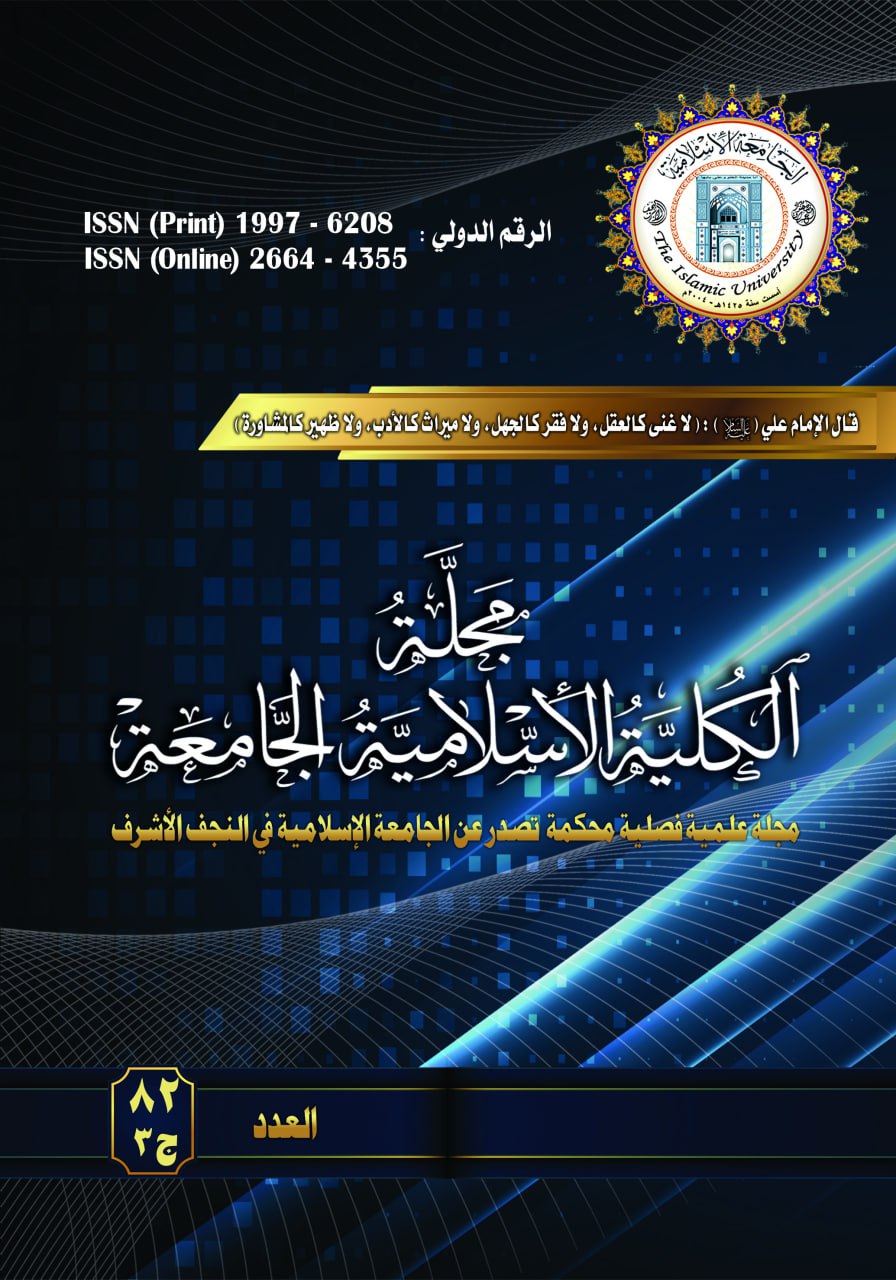Abstract
Abstract:-
Analyzing how visual symbols and metaphors are employed to transmit political messages is the focus of the fascinating field of study known as cognitive semiotics of political cartoons. This paper explores the importance of examining political cartoons from a cognitive semiotic viewpoint, emphasizing the various ways they may be used to criticize political ideology and societal conventions. The study wants to show how critical political cartoons expose significant social concerns. Analyze a few political cartoons by Iraqis and other cartoonists to show how political cartoons can be used to visualize political issues or the corruption of some politicians. Then, explain how political cartoons can alter people's ideologies.
In terms of data collection and analysis, the study is qualitative political cartoons that support the study and offer unbiased results and are used as the data to help solve the research study's problem and provide an answer to the research questions. Therefore, the researcher uses four models: Barthe's Semiotic Theory (ST) (1968), Sonesons' Pictorial Semiotics Theory(PST) (1989), Lackoff and Johnson's Conceptual Metaphor Theory (CMT) (1999), and Van Dijk Ideological Theory (IT) (2006). As a result, the researcher finds that the significance of political cartoons lies in their capacity to shed light on the corruption exhibited by certain politicians and visualize critical political issues. The study additionally demonstrates the collaboration between cognitive processes and semiotics in the comprehension, perception, and interpretation of novel information that was previously unavailable.
Analyzing how visual symbols and metaphors are employed to transmit political messages is the focus of the fascinating field of study known as cognitive semiotics of political cartoons. This paper explores the importance of examining political cartoons from a cognitive semiotic viewpoint, emphasizing the various ways they may be used to criticize political ideology and societal conventions. The study wants to show how critical political cartoons expose significant social concerns. Analyze a few political cartoons by Iraqis and other cartoonists to show how political cartoons can be used to visualize political issues or the corruption of some politicians. Then, explain how political cartoons can alter people's ideologies.
In terms of data collection and analysis, the study is qualitative political cartoons that support the study and offer unbiased results and are used as the data to help solve the research study's problem and provide an answer to the research questions. Therefore, the researcher uses four models: Barthe's Semiotic Theory (ST) (1968), Sonesons' Pictorial Semiotics Theory(PST) (1989), Lackoff and Johnson's Conceptual Metaphor Theory (CMT) (1999), and Van Dijk Ideological Theory (IT) (2006). As a result, the researcher finds that the significance of political cartoons lies in their capacity to shed light on the corruption exhibited by certain politicians and visualize critical political issues. The study additionally demonstrates the collaboration between cognitive processes and semiotics in the comprehension, perception, and interpretation of novel information that was previously unavailable.
Keywords
cognitive
ideology.
political cartoons
Qualitative
semiotic study
Abstract
الملخص:-
إن تحليل كيفية استخدام الرموز والاستعارات البصرية لنقل الرسائل السياسية هو محور مجال الدراسة الرائع المعروف باسم السيميائية المعرفية للرسوم الكاريكاتورية السياسية. تستكشف هذه الورقة البحثية أهمية دراسة الرسوم الكاريكاتورية السياسية من وجهة نظر سيميائية معرفية، مع التركيز على الطرق المختلفة التي يمكن استخدامها لنقد الأيديولوجية السياسية والأعراف المجتمعية. أن هذه الدراسة تظهر كيف ان الرسوم الكاريكاتورية السياسية الناقدة تكشف عن مخاوف اجتماعية كبيرة. حيث حلل الباحث بعض الرسوم الكاريكاتورية السياسية التي رسمها العراقيون ورسامي الكاريكاتير الآخرون لإظهار كيف يمكن استخدام الرسوم الكاريكاتورية السياسية لتصور القضايا السياسية أو فساد بعض السياسيين. و وضح الباحث كيف يمكن للرسوم الكاريكاتورية السياسية أن تغير أيديولوجيات الناس..
ومن حيث جمع البيانات وتحليلها، تعتبر الدراسة عبارة عن كاريكاتيرات سياسية نوعية تدعم الدراسة وتقدم نتائج غير متحيزة وتستخدم كبيانات للمساعدة في حل مشكلة الدراسة البحثية وتقديم إجابة لأسئلة البحث. ولذلك استخدم الباحث أربعة نماذج:
نظرية باثر السيمائية (1968) و نظرية السميائية التصويرية لسونسون (1989) و نظرية مفهوم الاستعارة لاكوف و جونسون (1999) و نظرية فان دايك الايديولوجية(2006). ونتيجة لذلك يرى الباحث أن أهمية الرسوم الكاريكاتورية السياسية تكمن في قدرتها على تسليط الضوء على الفساد الذي يظهره بعض السياسيين وتصوير القضايا السياسية الحاسمة. وتوضح الدراسة بالإضافة إلى ذلك التعاون بين العمليات المعرفية والسيميائية في الفهم والإدراك وتفسير المعلومات الجديدة التي لم تكن متاحة من قبل.
إن تحليل كيفية استخدام الرموز والاستعارات البصرية لنقل الرسائل السياسية هو محور مجال الدراسة الرائع المعروف باسم السيميائية المعرفية للرسوم الكاريكاتورية السياسية. تستكشف هذه الورقة البحثية أهمية دراسة الرسوم الكاريكاتورية السياسية من وجهة نظر سيميائية معرفية، مع التركيز على الطرق المختلفة التي يمكن استخدامها لنقد الأيديولوجية السياسية والأعراف المجتمعية. أن هذه الدراسة تظهر كيف ان الرسوم الكاريكاتورية السياسية الناقدة تكشف عن مخاوف اجتماعية كبيرة. حيث حلل الباحث بعض الرسوم الكاريكاتورية السياسية التي رسمها العراقيون ورسامي الكاريكاتير الآخرون لإظهار كيف يمكن استخدام الرسوم الكاريكاتورية السياسية لتصور القضايا السياسية أو فساد بعض السياسيين. و وضح الباحث كيف يمكن للرسوم الكاريكاتورية السياسية أن تغير أيديولوجيات الناس..
ومن حيث جمع البيانات وتحليلها، تعتبر الدراسة عبارة عن كاريكاتيرات سياسية نوعية تدعم الدراسة وتقدم نتائج غير متحيزة وتستخدم كبيانات للمساعدة في حل مشكلة الدراسة البحثية وتقديم إجابة لأسئلة البحث. ولذلك استخدم الباحث أربعة نماذج:
نظرية باثر السيمائية (1968) و نظرية السميائية التصويرية لسونسون (1989) و نظرية مفهوم الاستعارة لاكوف و جونسون (1999) و نظرية فان دايك الايديولوجية(2006). ونتيجة لذلك يرى الباحث أن أهمية الرسوم الكاريكاتورية السياسية تكمن في قدرتها على تسليط الضوء على الفساد الذي يظهره بعض السياسيين وتصوير القضايا السياسية الحاسمة. وتوضح الدراسة بالإضافة إلى ذلك التعاون بين العمليات المعرفية والسيميائية في الفهم والإدراك وتفسير المعلومات الجديدة التي لم تكن متاحة من قبل.
Keywords
الكاريكاتير السياسي، دراسة نوعية، معرفية سيميائية، أيديولوجية.
